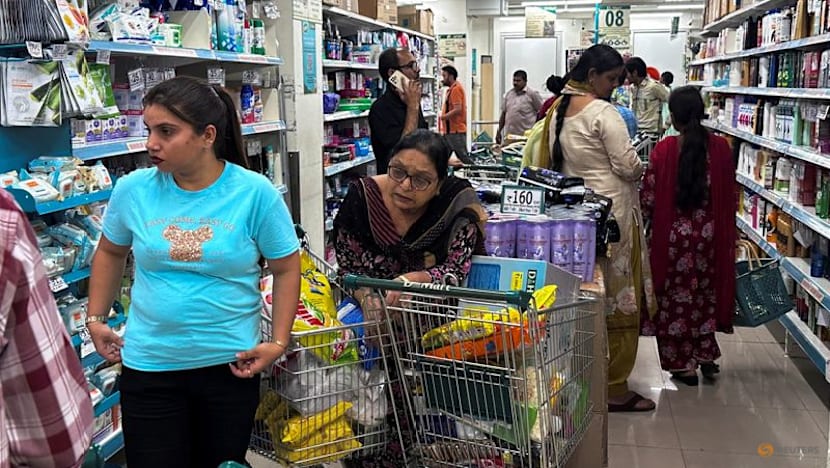India's biggest GST overhaul in 8 years targets cost of living relief, but sparks revenue concerns
Economists say the tax reform is also partly due to recently imposed United States tariffs totalling 50 per cent.

People shop for essential goods at a supermarket in Amritsar, India, May 9, 2025. REUTERS/Francis Mascarenhas

This audio is generated by an AI tool.
MUMBAI: For transport worker Bajeer Khan, rising living costs have long outpaced his monthly salary of about US$300.
Basic expenses like feeding his family of three and covering school fees has become harder each year, even as his income has gone up.
That is why the Mumbai resident welcomes the Indian government’s upcoming Goods and Services Tax (GST) overhaul - the biggest since the system was introduced eight years ago.
“It will be good if they do reduce the GST to 5 per cent. If this happens, maybe the cost of living will come down,” Khan said.
Indian Prime Minister Narendra Modi mooted his reform plan last month on the country’s Independence Day, saying he would make daily products cheaper for those in the world’s fifth-largest economy.
The tax cuts will come into effect before Diwali, India’s biggest Hindu festival, in October.
The government plans to bring most products under two rates - 5 per cent and 18 per cent. This would replace the current four categories ranging from 5 to 28 per cent.
Modi’s proposal includes reducing GST on consumer items such as talcum powder, toothpaste and shampoo from 18 to 5 per cent, while items like butter will face a lower rate of 5 per cent, down from 12 per cent.
GST on air conditioners and television sets could drop from 28 per cent to 18 per cent.
However, luxury goods and “sin items” will remain heavily taxed. GST on a packet of cigarettes, for example, could rise from 28 per cent to 40 per cent.
These changes are expected to make everyday items more affordable for millions of Indians, while maintaining higher taxes on non-essential and harmful products.
India’s GST council is expected to finalise the list of items for tax cuts in a meeting this week.
THE TARIFF FACTOR
While the changes are aimed at helping to simplify a system deemed too complicated, economists say it is also partly due to recently imposed United States tariffs totalling 50 per cent.
“To some extent, to offset those pains, there are now domestic reforms that are being taken by the government of India to ensure that at least consumption is not being hit dramatically,” said Madhavi Arora, chief economist at financial services provider Emkay Global.
“And the production that is essentially probably aimed at an export-led model could actually get rerouted to domestic demand.”
But the GST overhaul could mean lower revenue collections for the central and state governments.
Arora has estimated this could be as much as 0.4 per cent of India’s gross domestic product. She told CNA she expects this could be outweighed eventually by higher spending, benefitting sectors ranging from consumer goods to automobile manufacturing.
Some opposition-led states have strongly opposed the GST changes, citing fears of lost revenue. They are demanding either compensation or greater flexibility to raise their own taxes.
Business owners are also watching closely.
The mobile phone industry, for example, is lobbying for phones to be classified as “essential items” to come under the 5 per cent GST rate.
Mihir Prajapati, who runs a mobile phone shop, said the current 18 per cent tax is too high.
“If the GST rate comes down, then we can also plan to open another shop and expand our business,” said the owner of Maitri Mobile.
“The overall mobile industry would grow and we would also grow.”















